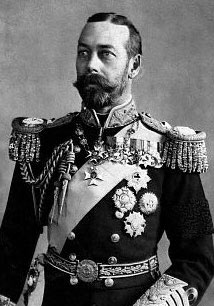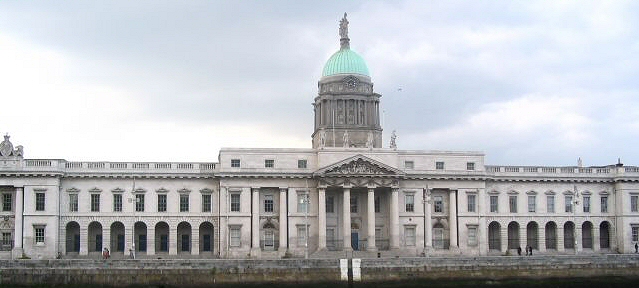
King George V's appeal for reconciliation was crucial in generating the good will that led to the Truce.
|
King George V's appeal for reconciliation was crucial in generating the good will that led to the Truce. |
The Irish War of Independence (or the Anglo-Irish
War) was a guerrilla campaign mounted against the British government in Ireland
by the Irish Republican Army under the proclaimed legitimacy of the First Dáil,
the extra-legal Irish parliament created in 1918 by a majority of Irish MPs. It
lasted from January 1919 until the truce in July 1921.
To purist Irish Republicans, the Irish War of Independence had begun with the
Proclamation of the Irish Republic during the Easter Rising of
1916. Republicans argued that the conflict of 1919-21 (and
indeed the subsequent Irish Civil War) was the defence of this Republic against
attempts to destroy it. More directly, it had its origins in the formation of an
unilaterally declared independent Irish parliament, called Dáil Éireann, formed
by the majority of MPs elected in Irish constituencies in the Irish (UK) general
election, 1918. This parliament, known as the First Dáil, and its ministry,
called the Aireacht, declared Irish independence.
The Irish Republican Army which fought in this conflict is often referred to as
the Old IRA to distinguish it from later organisations that used the same name.
Volunteers began to attack British government property, carried out raids for
arms and funds and targeted and killed prominent members of the British
administration.
They mimicked the successful tactics of the Boers, fast violent raids without
uniform. Although some republican leaders, notably Éamon de Valera, favoured
classic conventional warfare in order to legitimise the new republic in the eyes
of the world, the more practically experienced Michael Collins and the broader
IRA leadership opposed these tactics. The violence used was at first deeply
unpopular with the broader Irish population, but most were won around when faced
with the terror of the British government's campaign (response) of widespread
brutality, destruction of property, random arrests and unprovoked shootings.
Events began slowly, but by 1920 widespread violence was the rule.
Custom House in Dublin

In May 1921, IRA units occupied and burned the Custom House in Dublin city
centre. Symbolically, this was intended to show that British rule in Ireland was
untenable. Many military historians have concluded that the IRA fought a largely
successful and lethal guerrilla war against Britain, which
concluded that the IRA could not be defeated militarily. The total numbers killed
in the guerrilla war between Republicans and Crown Forces of 1919-21 came to
over 1,400.
The war ended in a
Truce on July 11, 1921, in some respects, the
conflict was at a
stalemate. Ultimately, the peace talks led to
the negotiation of the
Anglo-Irish Treaty (1921).
|
truce |
fegyverszünet |
|
stalemate |
patt-helyzet (sakkban) |
credits:
1. The text was extracted from Wikipedia The Free Encyclopedia under GNU Free Documentation Licence.